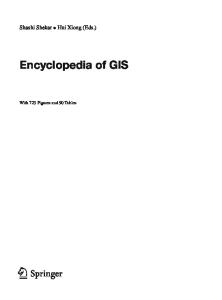Graph-Based Indexing and Querying on Image Corpora with Unified Visual Semantic and Relational Descriptions
We propose in this paper to integrate the semantic description of the image and the relational characterization of its components through an architecture which follows a sharp process for generating image index and query representations and computing thei
- PDF / 826,870 Bytes
- 10 Pages / 430 x 660 pts Page_size
- 75 Downloads / 328 Views
Abstract. We propose in this paper to integrate the semantic description of the image and the relational characterization of its components through an architecture which follows a sharp process for generating image index and query representations and computing their correspondence. This architecture relies on an expressive representation formalism handling high-level image descriptions and a conceptual query framework in an attempt to operate image indexing and retrieval operations beyond keyword-based and loosely-coupled state-of-the-art systems. At the experimental level, we evaluate its retrieval performance through recall and precision indicators on a test collection of 2500 color photographs.
1 Introduction and Related Work State-of-the-art image indexing and retrieval systems are mainly based on characterizing the image content through an automatic process mapping low-level extracted features (such as color histograms or Gabor matrices for respectively color and texture extraction) to semantic-based keywords (among them [6,7,10]). The major disadvantage of this class of frameworks relies on the specification of restrained and fixed sets of semantic-based keywords which are moreover not sufficient to accurately represent nontextual documents, such as images. Regarding the fact that several artificial objects have high degrees of variability with respect to signal properties, an interesting solution is to extend the extracted visual semantics with signal characterizations in order to enrich the image indexing vocabulary and query language. Therefore, a new generation of systems integrating semantics and signal descriptions has emerged and the first solutions [8,13] are based on the association of textual annotations to characterize semantics with a relevance feedback (RF) scheme operating on low-level signal features. These approaches have three major drawbacks: first, they fail to exhibit a single framework unifying low-level data and semantics, which penalizes the performance of the system in terms of retrieval efficiency. Then, as far as the query process is concerned, the user is to query both textually in order to express high-level concepts and through several and time-consuming RF loops to complement his initial query. Therefore, this solution for integrating semantics and signal features, relying on a cumbersome query process, does not enforce facilitated and efficient user interaction. Finally, these systems do not take into account the relational spatial information between visual entities, which affects the quality of the retrieval results. Indeed, the need of an expressive index and query language for manipulating multimedia documents, and in particular one supporting relational characterization of the content, has been highlighted in [11]. D.H.-L. Goh et al. (Eds.): ICADL 2007, LNCS 4822, pp. 196–205, 2007. © Springer-Verlag Berlin Heidelberg 2007
Graph-Based Indexing and Querying on Image Corpora with Unified Visual Semantic
197
We propose a unified multi-facetted framework unifying visual se
Data Loading...











